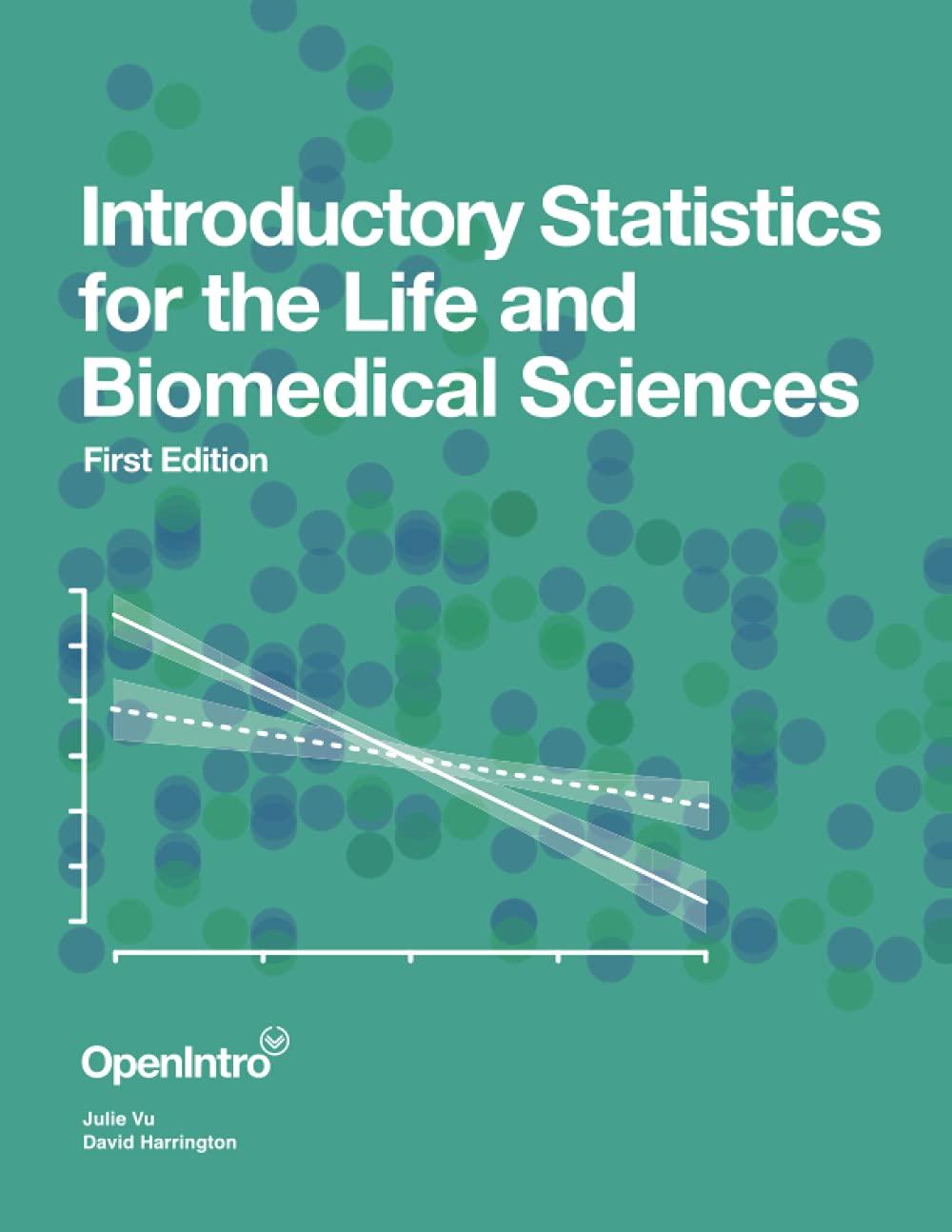In 2010, the General Social Survey collected responses from 1,154 US residents. The survey is conducted face-to-face
Question:
In 2010, the General Social Survey collected responses from 1,154 US residents. The survey is conducted face-to-face with an in-person interview of a randomly selected sample of adults. One of the questions on the survey is "After an average workday, about how many hours do you have to relax or pursue activities that you enjoy?" A 95% confidence interval from the 2010 GSS survey for the collected answers is 3.53 to 3.83 hours. Identify each of the following statements as true or false. Explain your answers.
(a) If the researchers wanted to report a confidence interval with a smaller margin of error based on the same sample of 1,154 Americans, the confidence interval would be larger.
(b) We can be \(95 \%\) confident that the interval \((3.53,3.83)\) hours contains the mean hours that the sampled adults have for leisure time after an average workday.
(c) The confidence interval of \((3.53,3.83)\) hours contains the mean hours that U.S. adults have for leisure time after an average workday.
(d) The survey provides statistically significant evidence at the \(\alpha=0.05\) significance level that the mean hours U.S. adults have for leisure time after the average workday is 3.6 hours.
(e) There is a \(5 \%\) chance that the interval \((3.53,3.83)\) hours does not contain the mean hours that U.S. adults have for leisure time after an average workday.
(f) The interval \((3.53,3.83)\) hours provides evidence at the \(\alpha=0.05\) significance level that U.S. adults, on average, have fewer than 3.9 hours of leisure time after a typical workday.
Step by Step Answer:

Introductory Statistics For The Life And Biomedical Sciences
ISBN: 9781943450121
1st Edition
Authors: Julie Vu, David Harrington





